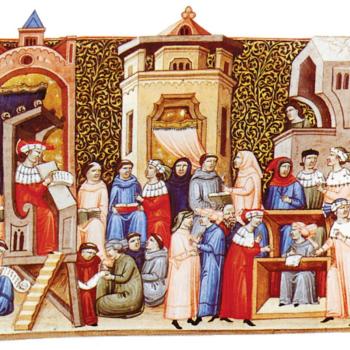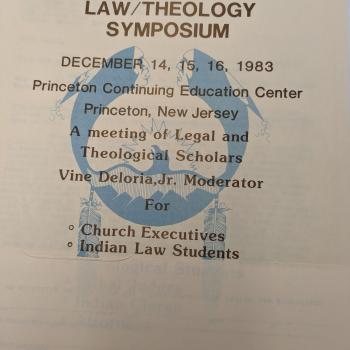This summer our family traveled to southern California, a first trip to San Diego. Our children clambered through tide pools on Point Loma peninsula at the Cabrillo monument. This National Park honors Juan Rodriguez Cabrillo, the first European to alight in 1542 on the west coast of what is now the United States of America. It’s a gorgeous place, blue Pacific vistas on both sides, the city to the east and sailboats, surfers, and an occasional sea-lion sighting to the west. My six-year-old son was charmed but confused: Who is that man in the statue? Is California an island? Are we still in America?
His confusion was understandable, but the older two siblings, who have had year upon year of U.S. history in public and private schools, were not much more in the know. What does Cabrillo have to do with the Pilgrims?
I teach colonial American history at Gordon College and know that sometimes textbooks make French and Spanish actions in the Americas peripheral to the main story on the Atlantic seaboard. There are some decent reasons for that, since the founding of our country emerges in particular ways from British experience and tradition. Still, unless we want to think that large portions of our land were but blank wilderness before they earned stars on our flag—silly in light of even the most obvious details, from names of cities and rivers to local dialects and foodways—we should integrate their stories better into the more familiar one. That requires, it seems to me, a practical understanding of the American colonial projects of France and Spain, rather than casting them as enemies eventually removed or people who just had the wrong idea of what to do with the new world. It also adds centuries of Catholic activity to the predominantly Protestant narratives of the east coast.
This is not a screed against bad schools or poor teaching of history in them, though the teaching of colonial history in my children’s narrow experience is a bit uneven. As best I can tell from scrutiny of state frameworks and from pestering my daughter when she was in third grade, the “state history” year here, it opens with Plymouth pilgrims, encounters Wampanoags and Bay colonists, sees them share the first Thanksgiving, leaps to Salem witchcraft, then arrives by Boston Tea Party to the American Revolution. Parental pressure to raise a hand and ask about King Philip or the Seven-Years’ War was unavailing. Anecdotal recounting of California history from friends on our travels reveals similar disconnects, of kids introduced to Spanish explorers and Franciscan missions and then pushed forward to the gold rush and statehood.
Emphasis on the Revolution, Constitution, and attainment of statehood appropriately emphasize the American part of American history. It is not bad that kids in Boston and San Diego spend a lot of time studying 1776 and 1787. I think, though, that another national distinctive gets obscured: the laboratory of the states, the singular character of each of the fifty. I recognize teachers can only do so much. It is a lot more to ask to have students know fifty states than one unitary national story. Some treatment of states is offered to kids in a geography idiom, the memorization of maps and capitals and regions. Last year, for instance, my daughter learned that New Jersey and Delaware are both mid-Atlantic states. This might be better than nothing. Learning that data out of context helps it seem meaningless, like memorizing the ingredients in shampoo from the back of the bottle. It would be much better to introduce those lines and dots on the map with discussion of how they came to look like this, who showed up there, and what they did.
Now, in political convention season, the worth of knowing the U.S. by states is driven home by state-bloc images in television. Delegates at Democratic and Republican gatherings appear by state. We may have caricatured comprehension of why the Texans are all in cowboy hats and some Wisconsites have cheese-shaped foam wedges as hats and why—besides keen desire for its electoral votes—so many compliments are lobbed at Ohio. We should know better who our neighbors are by state.
Thinking about states in political terms is natural in one of happiest texts to offer help escaping from state-ignorance: the biennial classic, Almanac of American Politics edited currently by Michael Barone and Chuck McCutcheon. Published since the early 1970s, the book is billed as a guide to the powerful in Washington. It is even more interesting as a guide to the states that send these officials forth. And not just the states in broad outline: Barone and colleagues tell us that this corner of a state is an old mining district, that one is quilted with rows of corn and soybeans, and that one squeezes in more college professors per square foot. It is a great way to meet your fellow Americans, the people with whom you share representative government, and to learn something about the land where we live.












